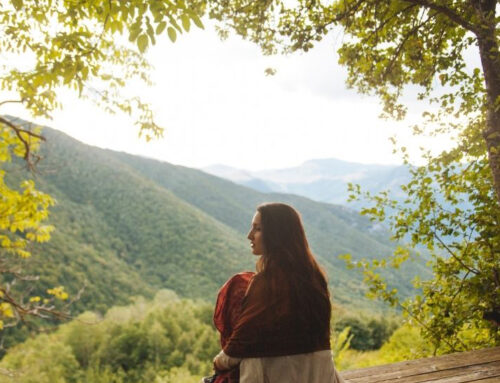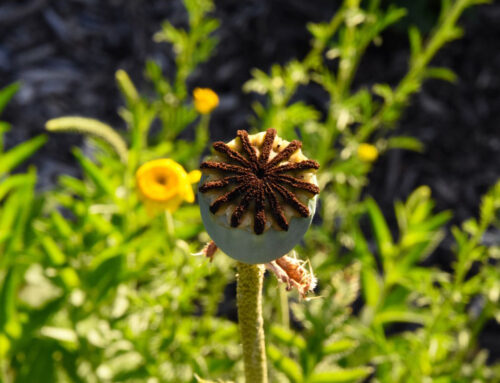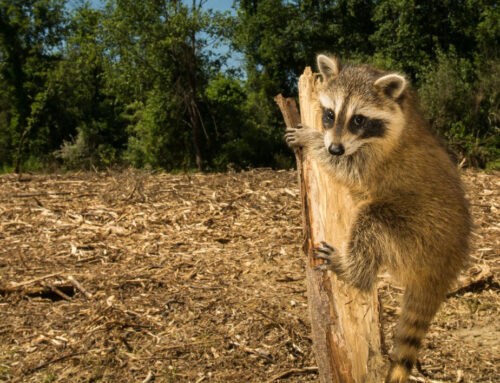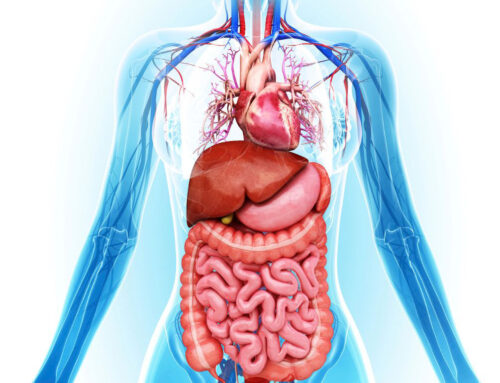The sun is shining, the air is crisp and brisk, and it is a gorgeous February day.
Other than Valentine’s Day, most people consider February to be a fairly uninspiring month. After all, it’s cold, the excitement of the winter holidays and New Year celebrations are behind us, and gardeners and nature lovers are anxiously waiting for the arrival of Spring.
Well, I’m here to let you know that February has a number of special holidays and curiosities to celebrate – and this month, I’ll be sharing them with you and offering up some additional tidbits of information that you can share with friends, family, or strangers (if you’re at a loss for words at a party, or, perhaps trapped in an elevator with seven other terrified people).
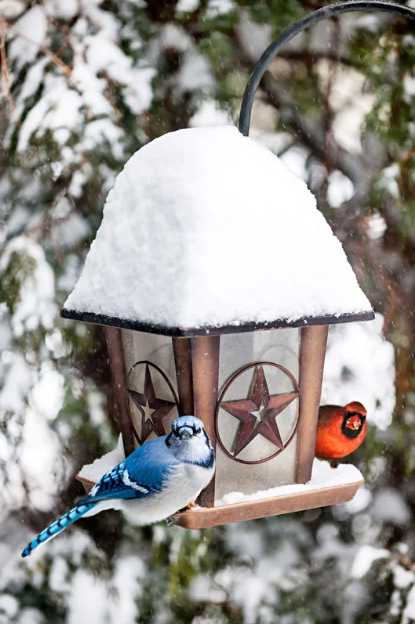 Today, I’ll be writing about feeding our feathered friends, because February is National Bird Feeding month.
Today, I’ll be writing about feeding our feathered friends, because February is National Bird Feeding month.
National Bird Feeding month was first established by Congressional Proclamation in February of 1994 by Illinois congressman John Porter, who was an avid naturalist. Congressman Porter wanted to shed light on the fact that February is traditionally a very cold month in the northern hemisphere, and as such, wild birds often struggle to find adequate food, water, and shelter to survive. Establishing an official national event encourages individuals to offer water, food, and protection to help with birds’ winter survival.
For many of us, we are most familiar with the birds that visit our backyards. But did you know there are between 150-200 common backyard bird species in North America alone, and over 10,000 different bird species worldwide who frequent our feeders and gardens?
So, what should you feed your feathered friends that visit your backyard? Well, food stuffs are as diverse as the birds who eat them. However, in North America, you generally can’t go wrong with:
- Black Oil Sunflower Seeds
Hands down #1 favorite for most birds. Not only do they taste great, but they also are packed with great nutrition.
They are high in healthy fats – This is very important, because in order to stay warm and active in cold temperatures, birds have substantially higher metabolic needs. Some birds, like chickadees can lose up to 10% of their body fat overnight just trying to stay warm. Thankfully, fats are the best nutritional sources for energy renewal and are even better than carbohydrates. Why? Because fats provide 9 calories of energy per gram, while carbohydrates only provide 4 calories per gram. That’s twice as much. Plus, metabolically speaking, fats break down more slowly than carbs do, and that provides a longer-lasting energy source for our feathered friends, perfect for endurance activities or survival.
They are packed full of protein. And just like in humans, protein is critical for muscle growth, immunity support, and tissue repair after injuries. Protein is also the primary building block for keratin, and keratin is the structural protein that makes up hair and nails in humans, and feathers, beaks, and claws/talons in birds.
They are loaded with vitamins and minerals like:
Vitamin E which further support the immune system
Calcium, which aids in bone health and strong shells in egg laying in females, and Iron and Potassium which keeps birds’ blood and muscles strong.
- Suet Cakes – which are a favorite with Cardinals, Woodpeckers, Jays and Finches.
- Cracked Corn – is an inexpensive favorite for ground-feeding birds like Juncos, Quail, and Sparrows.
- Peanuts (shelled or whole) – LOVED by bigger birds like Blue Jays and Woodpeckers.
- Mealworms (either live or dried) – for insect-loving birds like Robins, Bluebirds and Wrens.
- Fruit (apples, oranges, berries, grapes) – Because, who can resist dessert?
It is important to note that there are a few things you should NOT feed birds.
- Bread – I know this is commonly used, but for birds, bread has zero nutritional value. It is essentially the equivalent of eating nothing but junk food like potato chips. But more importantly, bread can actually hurt or kill wild birds. In ducks, geese, and other waterfowl, a steady diet of bread products causes severe nutritional deficiencies and a condition called “angel wing,”– seriously deformed wing growth that makes it impossible for them to fly.
Also, old bread can carry molds (some of which are not easily seen on the bread’s surface), and molds can carry dangerous fungi and bacteria. Many of these molds produce something called mycotoxins – which can cause serious illnesses in both humans and birds. Mycotoxins can damage the liver, the nerves, the immune system, and can even cause cancer with long-term exposure.
Finally, uneaten, soggy bread rots quickly and pollutes water fountains, ponds, and lake water. Not only does it make a mess, but it also decreases oxygen levels for fish and other aquatic life and encourages bacteria growth and algal blooms.
- The second no-no is salty or processed foods. It’s junk food for humans and birds and is very hard on their kidneys.
- And finally, please don’t add honey or molasses to feeders. It may taste great to us, but the high glucose load can be tough on birds’ livers and their metabolic systems. Also, honey and molasses are perfect mediums for bacteria, molds, and fungi. Another source for both dangerous mycotoxins and botulinum spores – and botulinum spores are the dormant form of the deadly bacteria clostridium botulinus – better known as botulism, one of the deadliest toxins known.
How to Keep You and Your Birdfeeders Safe and Clean?
In colder months, I try to clean my feeders every two weeks or so with warm/hot water and mild dish soap. In warmer months, feeders may need cleaning once a week. Every few weeks, I use a diluted bleach (1 part bleach to 9 parts water) or vinegar (1 part vinegar to 2 parts water) solution to give the feeders a deeper clean.
Just before I wrote this post, I gave all five of my feeders a deep clean, and it only took about fifteen minutes. This doesn’t require a lot of time or hard work. Also, I also add my feeder cleaning days to my calendar so I don’t forget.
Finally, please remember to wear gloves when you’re feeding the birds or cleaning your feeders. This protects us and our feathered friends. To be extra safe, wash your hands one more time after you remove your gloves (That’s good advice coming from the epidemiologist, nurse practitioner, and mom part of my brain).
And now, here are some quirky fun facts about feeding birds:
- Birds love their regular feeders and the humans who feed them. Many birds will even thank their favorite humans with friendly chirps, or by offering gifts. Last season, I had a very handsome male Blue Jay leave me “gifts” of a piece of string, and a button on the platform feeder right after I fed him. He was such a flirt!
- Just like humans, birds gossip about where the best neighborhood “restaurants” are – and they tell their friends. Now that’s free publicity.
- Think humans are the only ones who can get drunk? Nope. It is quite common for birds to get tipsy on fermented berries. Just like grapes used for wine, the sugar and chemicals in ripe berries turn into alcohol. Every season my covered front porch turns into a temporary “drunk tank” (uncovered shoeboxes lined with soft towels or blankets) for party-hearty birds like cedar waxwings and robins who need a safe place to sleep or sober up.
- Chickadees can remember thousands of hiding spots for their stashed food. If only I was half as good at finding my car keys.
- Finally, in case you have LOTs of spare time, or TONs of money, consider this: A bird lover in the U.S. holds the record for the most bird feeders in one yard, with over 200 different feeders. And in 2015, a custom-made gold-plated bird feeder was installed in a park in London valued at over $200,000.
Stay tuned. In my next posts, I’ll be sharing additional quirky garden and nature curiosities and more ways we can celebrate the month of February together
Happy bird feeding. Have a great day.




